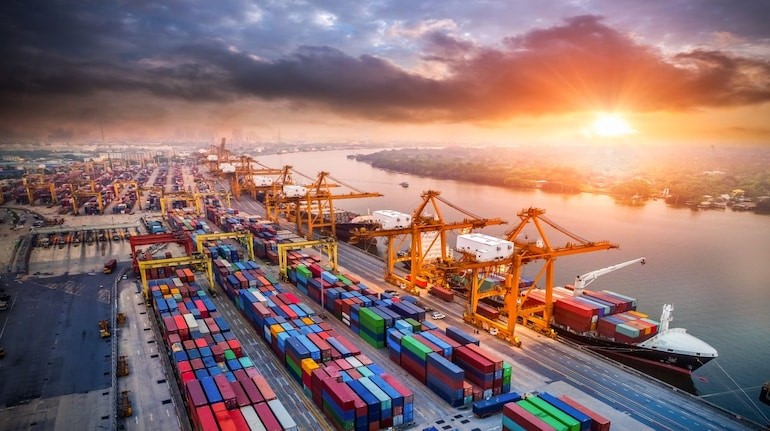Why the New National Logistics Policy will be a Game Changer

Much has been done, and much more remains to be done. For instance, we need to move on from breaking records in building oil-guzzling roadways, and ramp up the railways and inland waterways.
India finally has a National Logistics Policy (NLP). The policy aims to achieve, among others, ‘quick last-mile delivery, end transport-related challenges, save time and money of manufacturers, and prevent wastage of agro-products. The end result is significant time and the cost reduction.’’
As Prime Minister Narendra Modi said, the policy has not come out of the blue but after eight years of work. He said that the policy was a beginning and not the end — it is policy plus performance that will energise all sectors and help transform the country into a developed nation by the end of Amrit Kaal, in 2047.
Logistics demystified
Logistics encompasses planning, coordinating, storing, and moving resources —people, raw materials, inventory, equipment, etc., from one location to another, from the production points to consumption, distribution, or other production points. The policy has simple but transformational targets to help benchmark its performance.
1. Reduce the cost of logistics from 14-18 percent of GDP to global best practices of 8 percent by 2030. Countries like the US, South Korea, Singapore, and certain European nations have such a low logistics cost-to-GDP ratio.
Assuming the current cost is 16 percent of GDP, that would mean that logistics costs have to be cut by half to be near global benchmarks by 2030, assuming the global benchmark does not improve further.
2. Improve the country’s Logistics Performance Index (LPI) ranking to be among top 25 countries by 2030.
This is not ambitious enough.
India is the fifth largest economy in the world. If it has to move fast to be among the three largest economies and join the league of developed nations, it has to aim to be among the top 10 in the LPI by 2030. It has to match the pace of South Korea.
3. Create data-driven decision support systems (DSS) to enable an efficient logistics ecosystem. This is key. The DSS was needed yesterday, and time is running out fast.
4. The policy’s target is to ensure that logistical issues are minimised, exports grow manifold, and small industries and the people working in them benefit significantly.
Finally, strengthening the logistics sector will not only make it easier to do business, but also to generate substantial employment and ensure improvement in wages and working conditions.
Key building blocks
1. The most important building block is the Unified Logistics Interface Platform (ULIP), which aims to collapse all logistics and transport sector digital services into a single portal, thereby freeing manufacturers and exporters from the present tyranny of long and cumbersome processes.
2. Ease of Logistics Services (E-Logs), a new digital platform. This will allow industry to directly take up operational issues with government agenciesfor speedy resolution.
3. The Comprehensive Logistics Action Plan comprising integrated digital logistics systems, standardisation of physical assets, benchmarking service standards, human resource development, capacity building, development of logistics parks, etc.
The agenda
The NLP, in conjunction with the Gati Shakti Programme, the Sagarmala and Bharatmala (waterways and roadways) schemes, the Dedicated Freight Corridors, etc., can be transformational.
But much remains to be done.
For instance, with the penchant for world records in highway construction, the pendulum has swung too far in the direction of road transport, a fossil fuel guzzler and roadblock to achieving Net Zero by 2070. In 1980, 60 percent of freight moved by rail. In 2022, it is close to 20 percent.
The rail sector suffers from many structural deficiencies which have to be eliminated fast if the logistics cost has to be halved to global benchmarks. The average speed of a freight train has stagnated at 25 kmph for decades— it has to be urgently doubled to 50 kmph at least.
The railways need to have a time-table-based goods operation. It has to become an aggregator at the source of freight, and disaggregate at the destination, to capture the high-value small-load business (as against rake-load goods)
For decades the country has talked about eco-friendly and cost-effective inland waterways freight movement, but nothing has happened. There is valuable learning available from the river ports of China.
Road logistics is a totally fragmented sector, where a large chunk of truck owners have a very small fleet.
Most of them are yet to fully emerge from the shock of Covid lockdowns. These small operators serve 2 / 3 tier cities where the maximum micro and small enterprises (MSME) operate. There is a clear case for the aggregation of small operators with government-supported aggregation apps. Similarly, there is a need for large players in the sector to drag costs down.
Apart from improvement in key functional areas, the size of our ports have to grow manifold – it is not without reason that 10 of the world’s top 20 ports are in China.
Lastly, it is time to give wings to air logistics and drastically improve the transport of high-value and perishable items.
Adani Transmission will continue to invest Rs 5,000 crore & upwards in FY23 & FY24 each, says Anil Sardana, MD & CEO, Adani Transmission. Joining CNBC-TV 18 from the MOFSL Investor Conference, he gives some clarity on Reliance Infrastructure’s claims on the Mumbai Power Circle.
Reliance Infrastructure had filed an arbitration claim of Rs 13, 400 crores against Adani transmission for breach of terms in a deal to sell its Mumbai power distribution business.
However, Adani had later issued a statement rejecting the claims.
“Reliance infra is a company from which he (Adani) bought the distribution business and that was done and the transaction closed in August of 2018. Subsequently, they came back in December 2021 asking for some claim which we said that as per the agreement is already paid for. They then decided that they will contest it through arbitration and as a part of that process we also laid down our claims and now they have laid their counter-clocks,” clarified Sardana. He further said, “So this process will now go through and we hope that through the due process of law we will have an early resolution but nothing changes as far as customers are concerned and nothing changes as far as the regulatory – a regime of the Mumbai distribution system – is concerned. Therefore, it is only between the shareholders that we will deal with this issue.”









